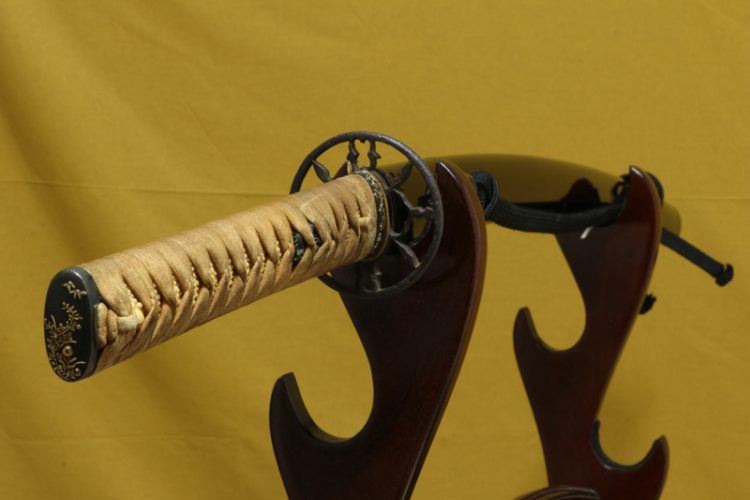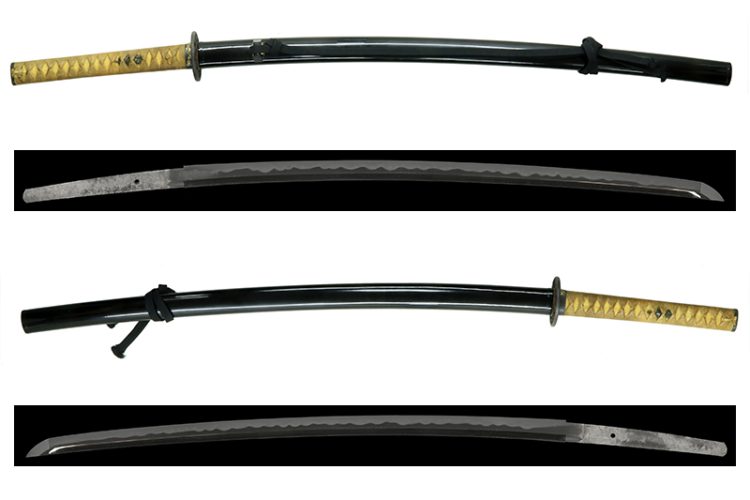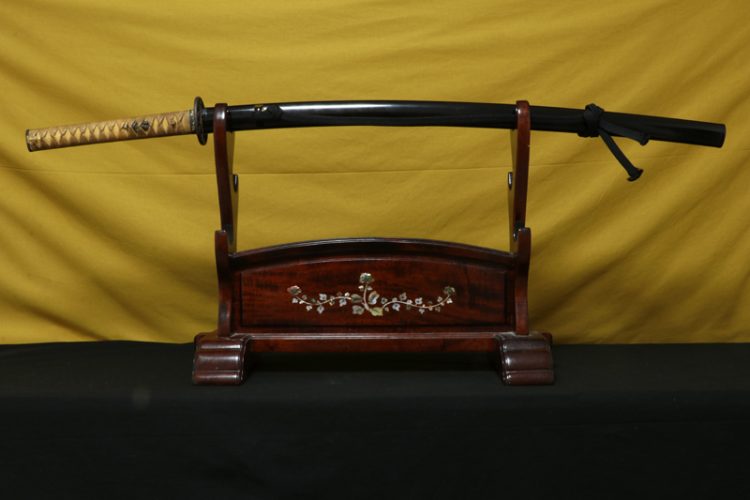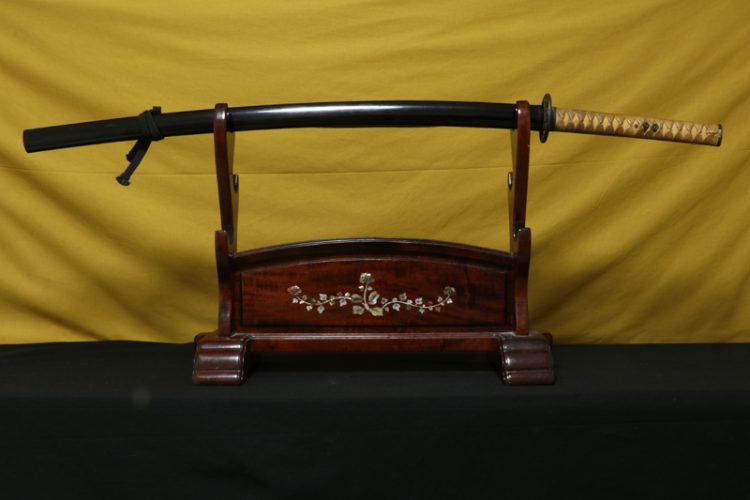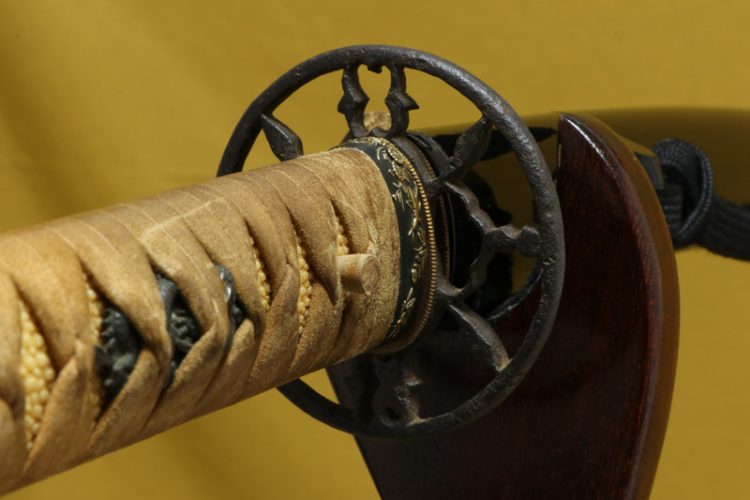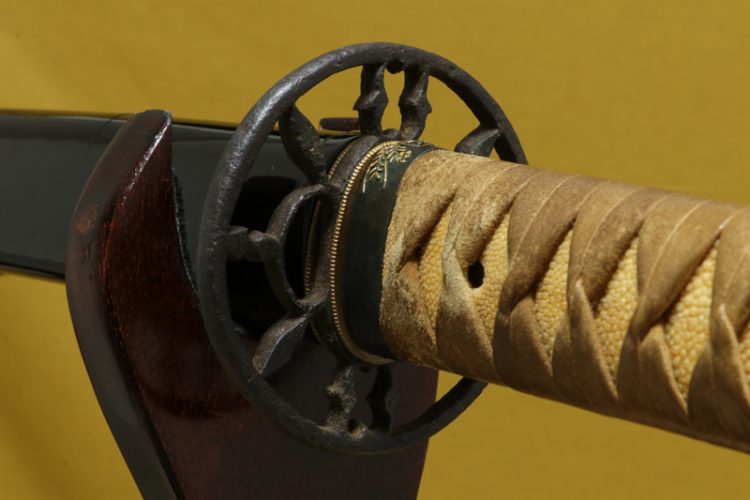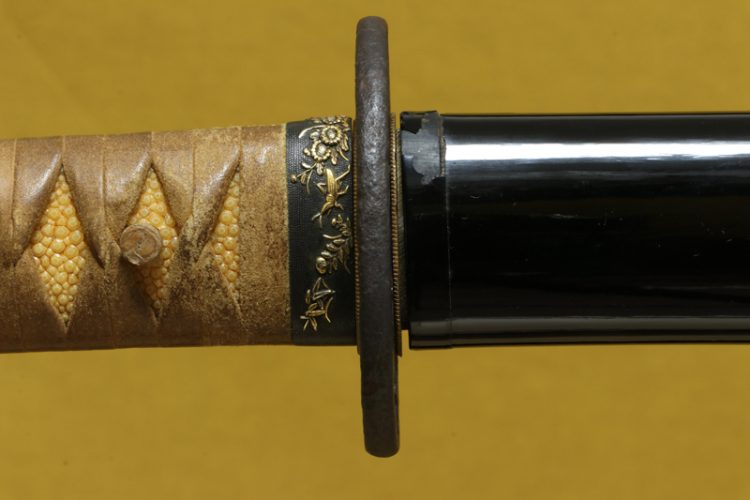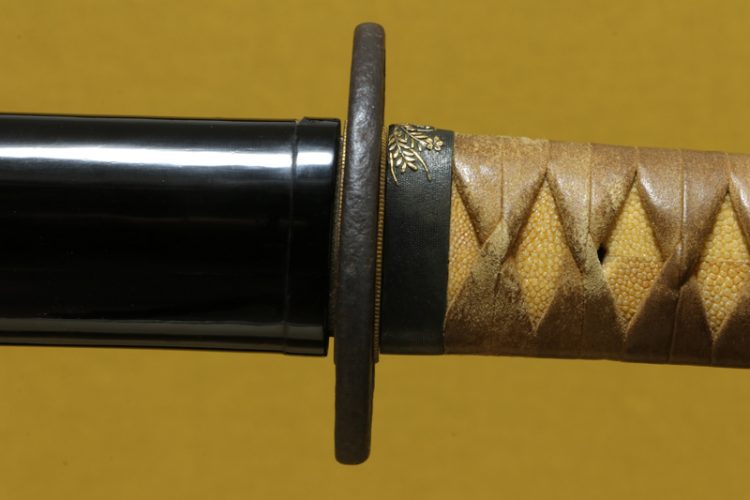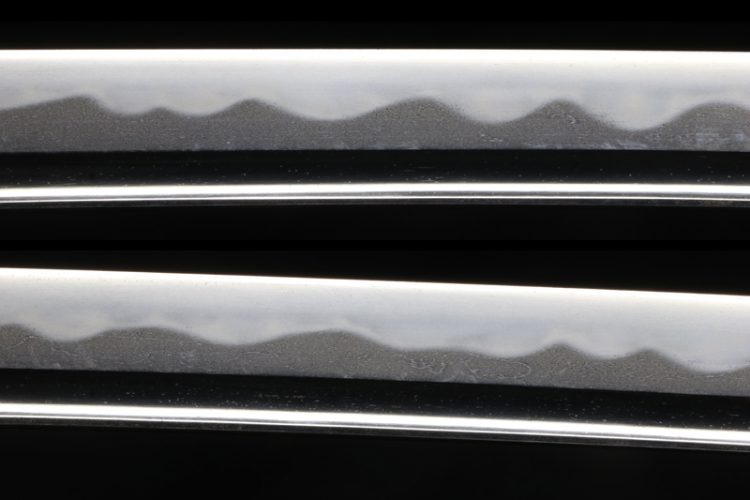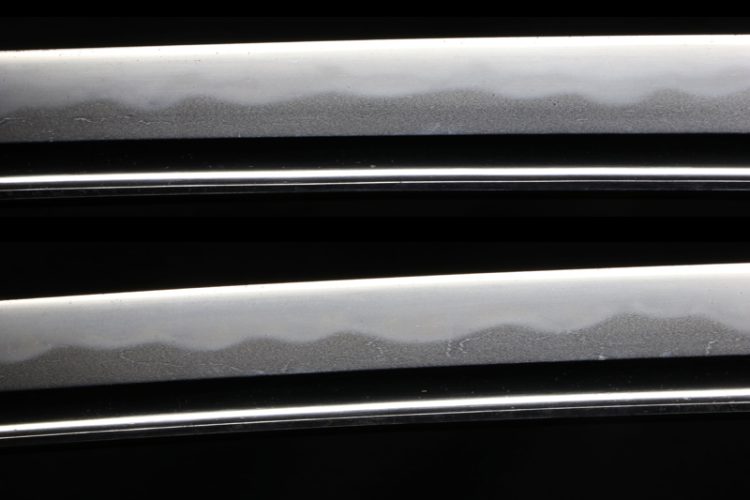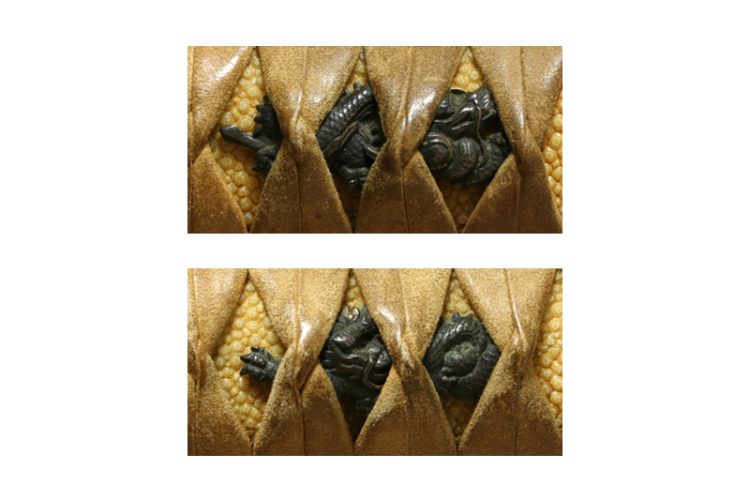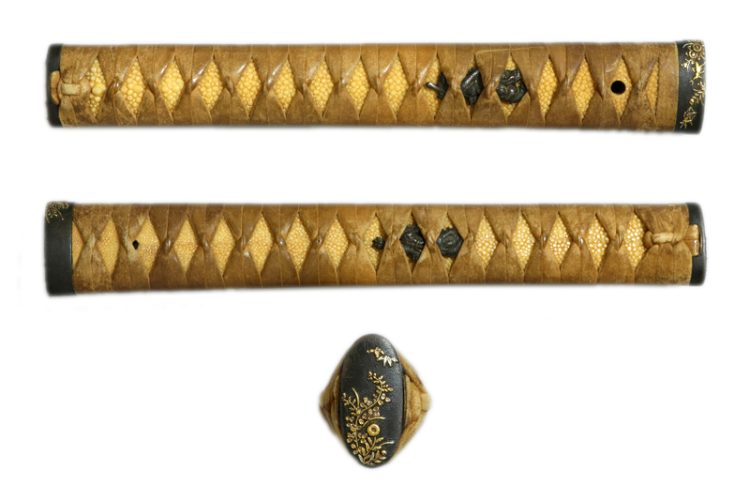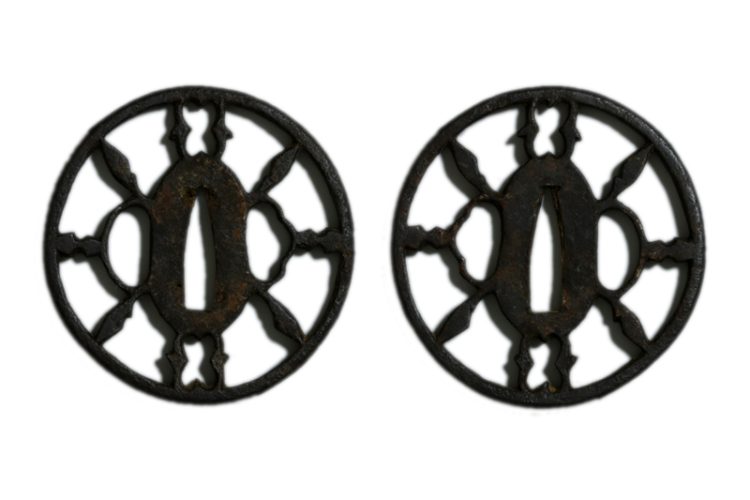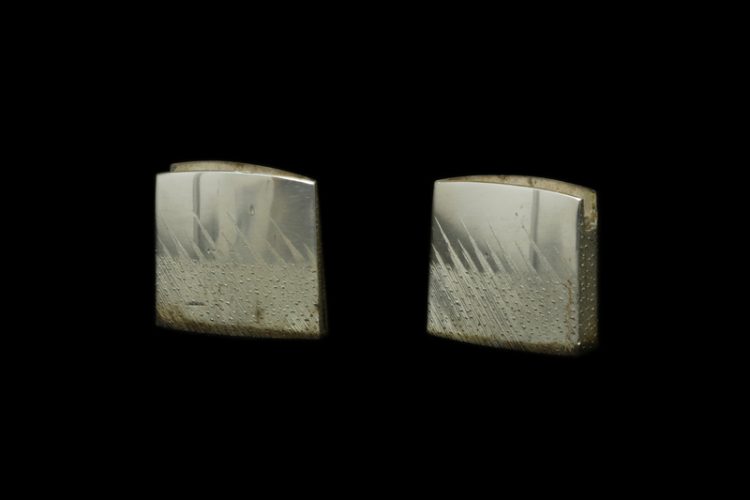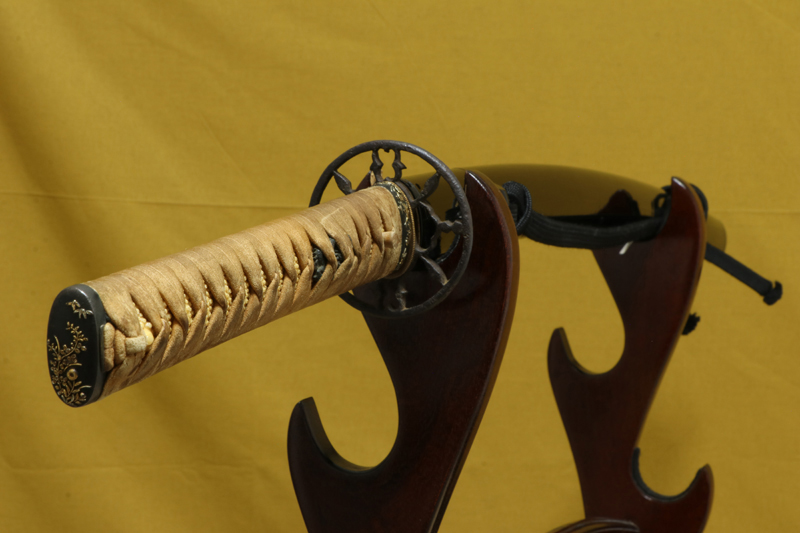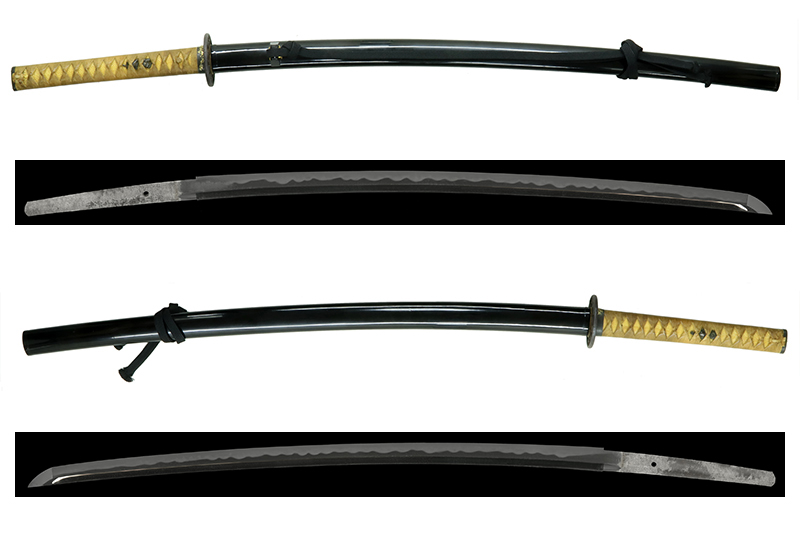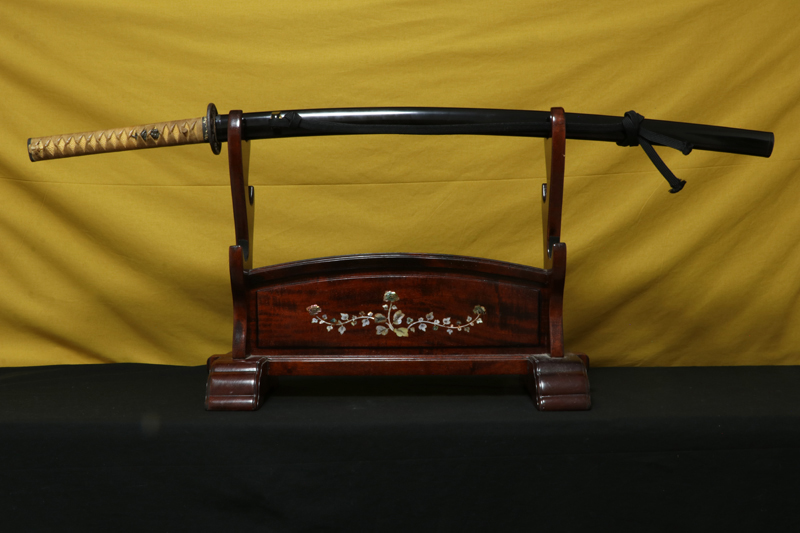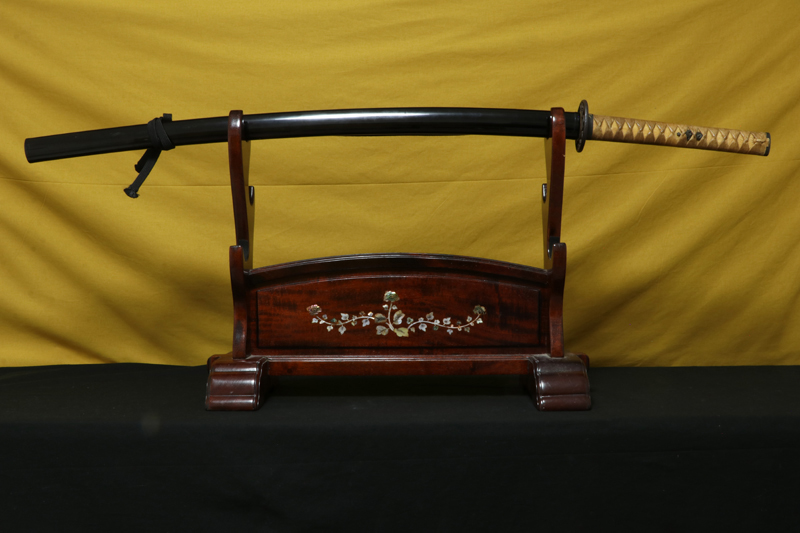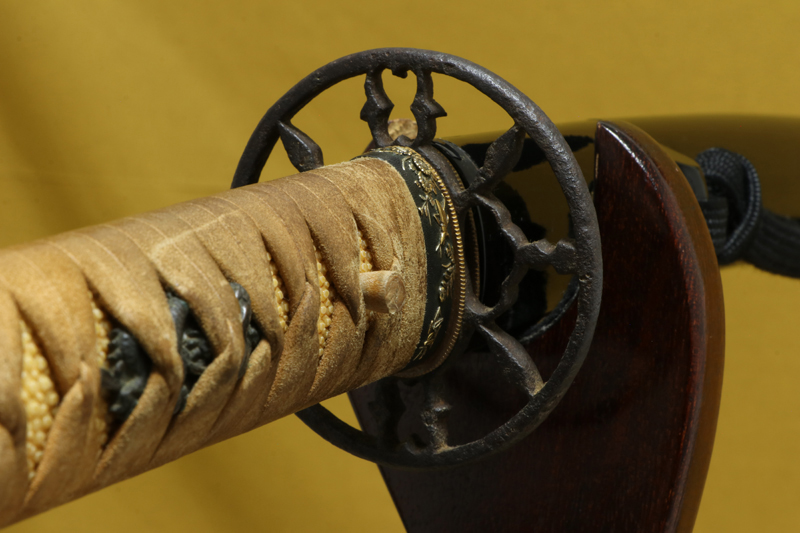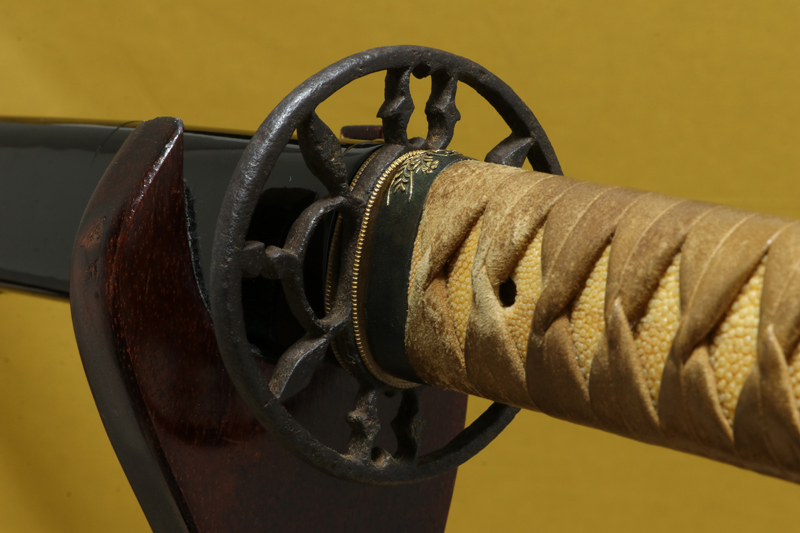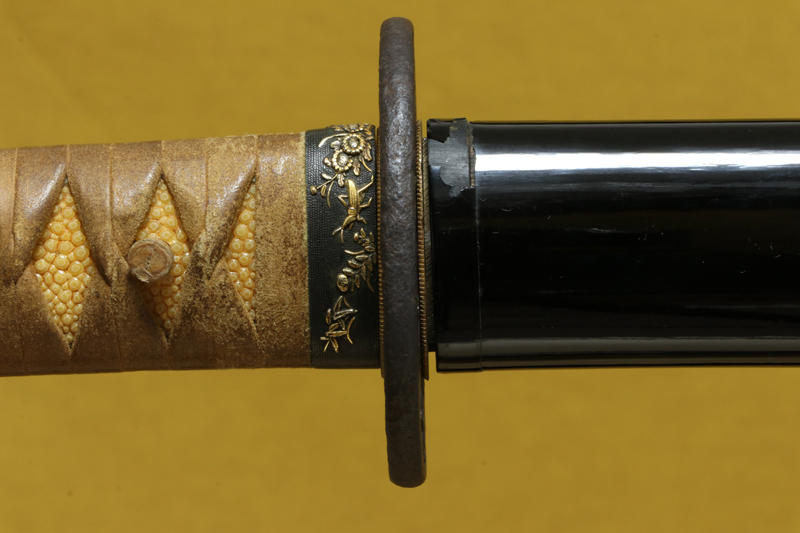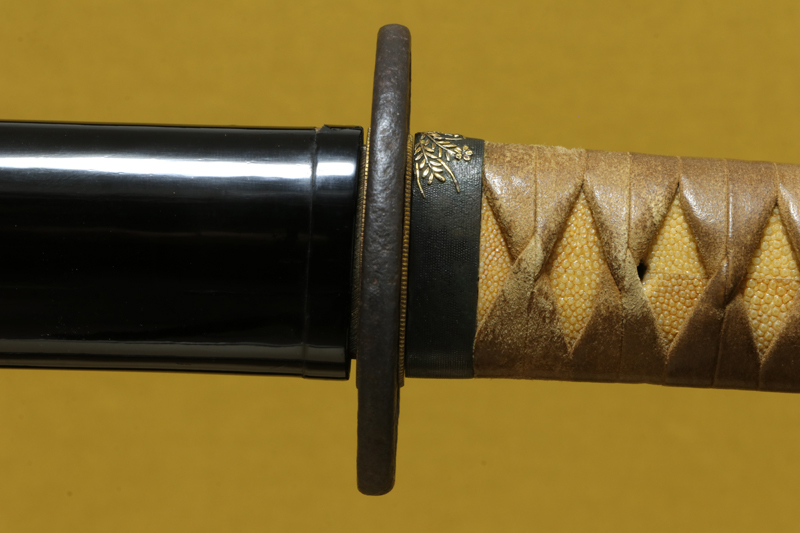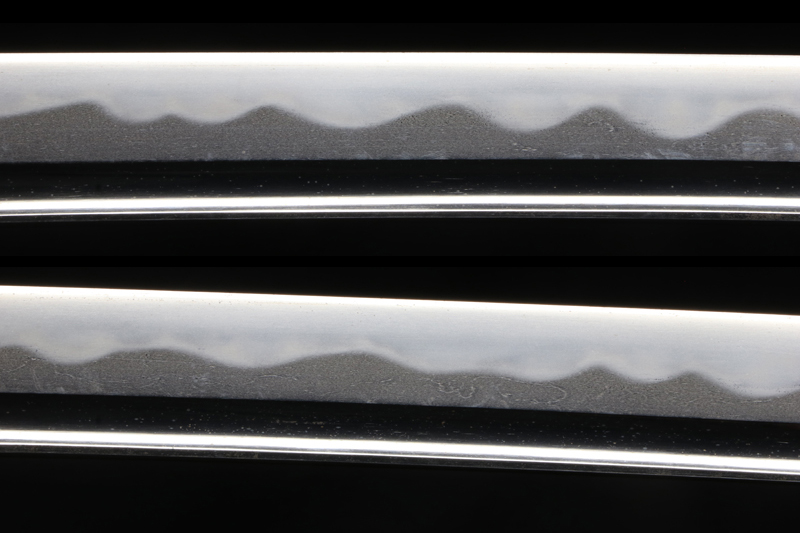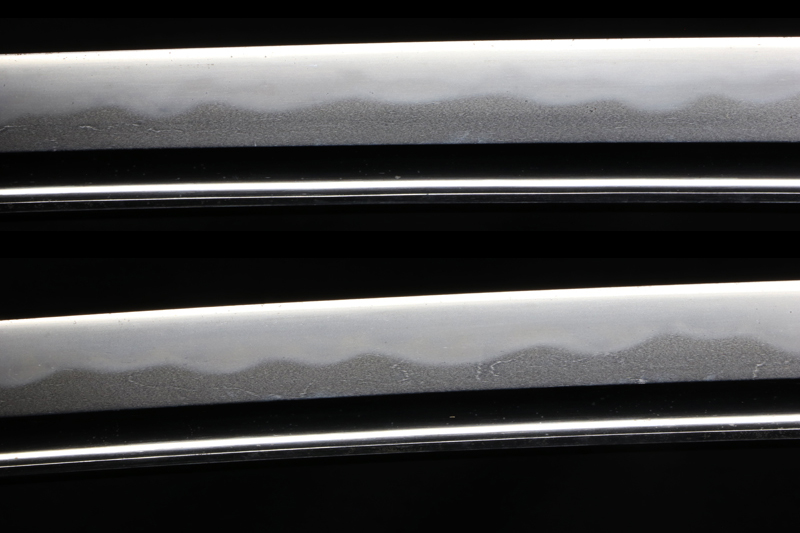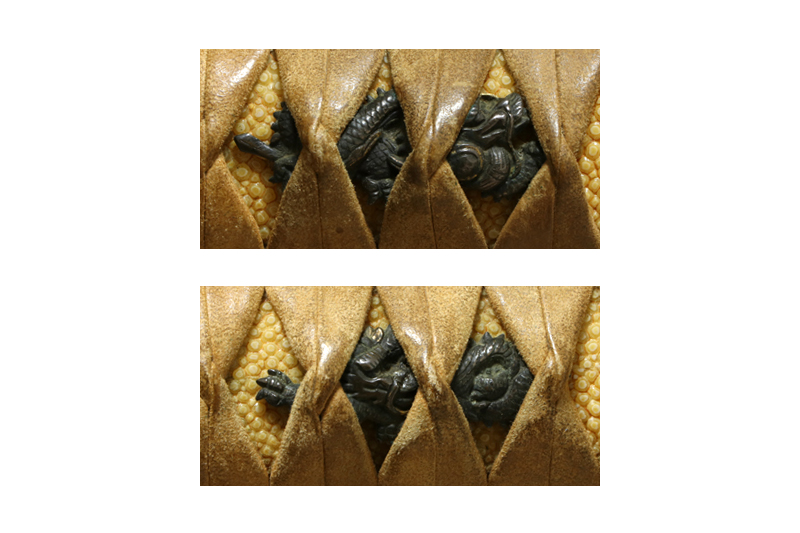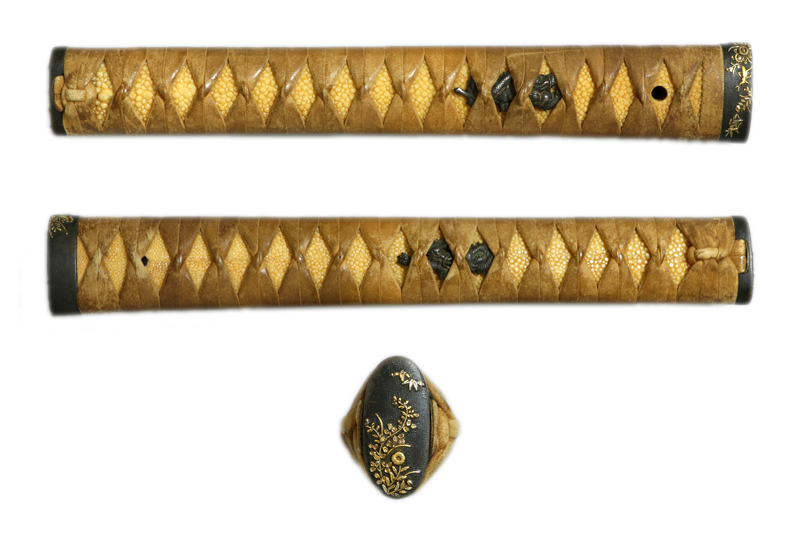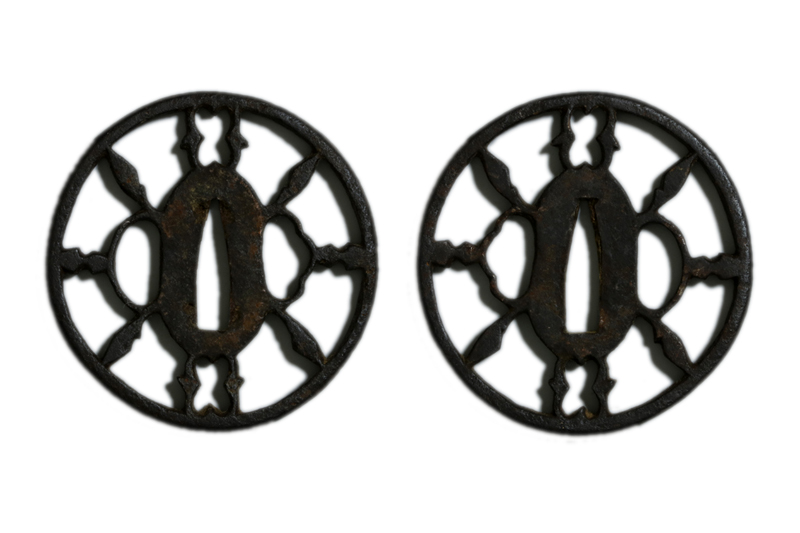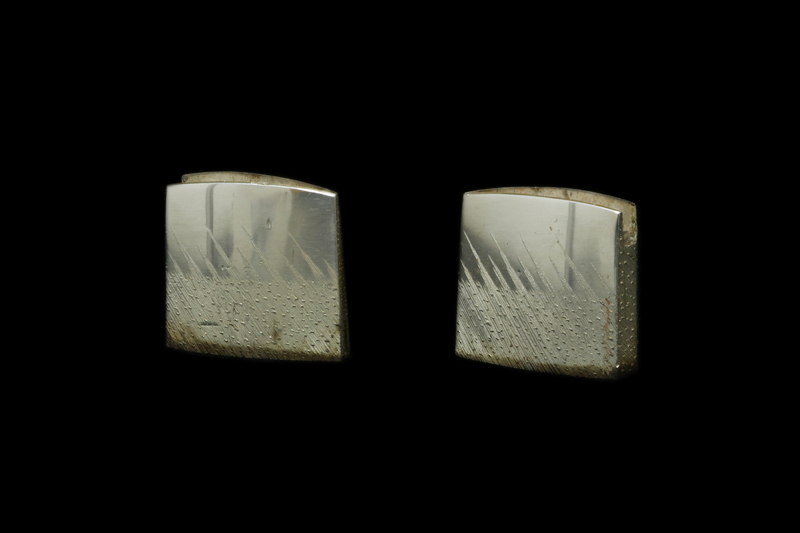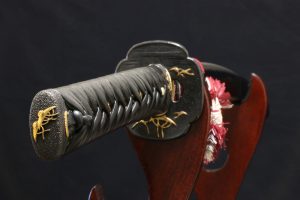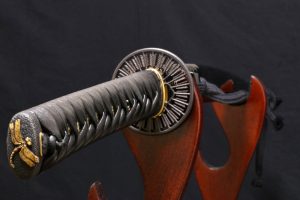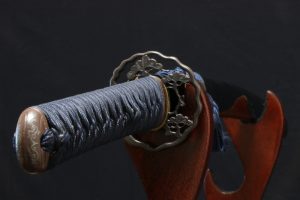説明
「体配 figure」
体配は鎬造り庵棟、身幅重尋常、鳥居反り小鋒。茎は生で切り鑢がかかる、茎尻は栗尻と成る。
「彫物 carving」
彫り物は片チリの棒樋がハバキ下に掻き流しと成る。
「地鉄 jigane」
地鉄は杢目肌が詰み、地沸付く。
「刃紋 hamon」
刃紋は互の目乱れで、匂深く小沸よ良く付く。刃中、足長くよく入り、砂流し金筋が入る。釯子は刃紋成りに入り小丸に返る。
「特徴 detailed」
肥前國住藤原吉光、本名福田光雄、明治45年生まれ、昭和7年小山信光に入門、大戦中は海軍受命刀匠として兄と共に鍛刀しました。戦後は兄と共に作刀を再開しました。吉光刀匠の刀は切れ味に定評があり、肥前刀の伝統である鍛えの美しさと、特に刃紋の働きが巧妙であるため人気があり、美術刀剣はもとより、扱い易い居合抜刀用の刀に至るまで幅広く製作したことでも名を上げた刀匠です。
本作、居合用にバランス良く作られたと物と思われますが、良く鍛えられた地鉄に刃紋の働きが見事で、直刃が多い吉光刀匠の作品の中では貴重です。
刀身の状態は古研ぎですが、概ねコンディションは良く、拵は使用感はありますが良好です。
Fujiwara Yoshimitsu of Hizen Province, real name Mitsuo Fukuda, was born in 1912 (Taishō 1).
In 1932 (Shōwa 7), he became an apprentice under Koyama Nobumitsu.
During the war, he worked alongside his elder brother as an officially appointed swordsmith for the Imperial Japanese Navy. After the war, the two brothers resumed sword forging.
Yoshimitsu was well known for producing blades with excellent sharpness. His works gained popularity for the beauty of the forging, rooted in the Hizen sword tradition, and particularly for the sophisticated activity in the hamon. He earned recognition not only for fine art swords but also for creating highly practical blades suitable for Iaido and battō, known for being easy to handle.
This piece is believed to have been crafted with ideal balance for Iaido. It features a well-forged jigane with impressive activity in the hamon—making it a rare example among Yoshimitsu’s works, as he most commonly made swords with suguha hamon.
The blade is in a somewhat older polish but remains in generally good condition. The koshirae shows some signs of handling but is also in good condition.
「拵 Koshirae」
ハバキ(habaki) :銀無垢一重の腰祐乗。
鍔(tsuba) :鉄地雁金と冥加透かし。
縁頭(fhchikashira):縁は赤銅魚子地秋草秋虫の図。
目貫(menuki) :赤銅地龍の図。
柄(tsuka) :鮫は親粒が付く、柄巻は牛スエード薄茶の諸捻り巻。
鞘(saya) :黒呂。
「刀剣の状態 condition of blade」
研:古研ぎですが、概ね良好です。
傷:欠点に成るような傷は有りません。
